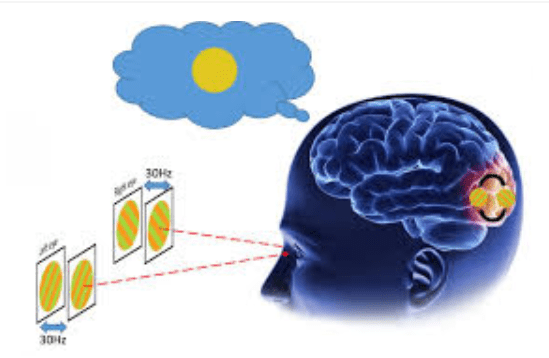The visual systems is responsible for vision. It allows us to obtain quick information of our surroundings. It frequently aids other systems in learning about the environment.

This system helps with:
- Visual skills (tracking, convergence, divergence, saccades, and peripheral awareness)
- Ability to judge space and distance
- Visual perceptual skills - making sense of what we see
- Eye contact
- Works with other systems to coordinate movements
- Anticipates change in the environment
- Non-verbal communication
Some behaviors we may see due to sensory challenges within the visual system include:
- Clumsiness: a tendency to run into walls, objects, or people
- Desire to play in low-light areas
- Increased distractibility; noticing events happening around them, noticing people leave or enter the space, etc
- Difficulty with sustained attention, reading, learning, spelling, and writing
- Head tilting and/or squinting of the eyes, or covering one eye when reading
- Missing eye contact
A few activities that can be used to improve the visual system:
- Playing games that require searching and identifying words, pictures, or objects
- Hide and seek
- I- Spy
- Puzzles (i.e, jigsaw)
- Memory/ Matching game
- Bubbles
- Play with
- Kaleidoscope
- Finger lights
- Glow sticks
- Lava lamp
- Sensory bottles
- Light table
- Bubbles
- Finding objects that are needed for everyday life
- Near and far vision activities
- Navigating from a map
- Catching/Rolling a ball
- Playing with a balloon
- Connect the dots
- Matching, copying, tracing, coloring, cutting, and gluing
- Origami